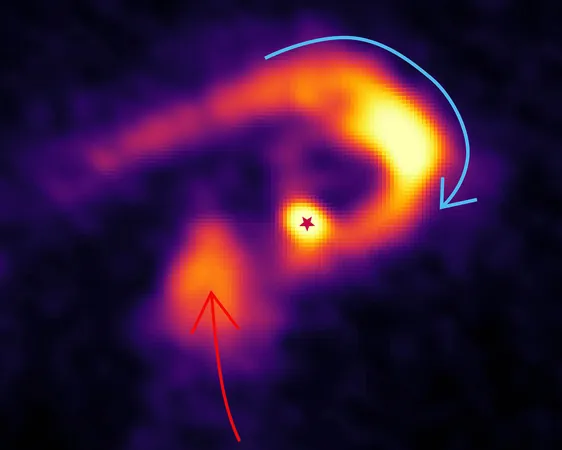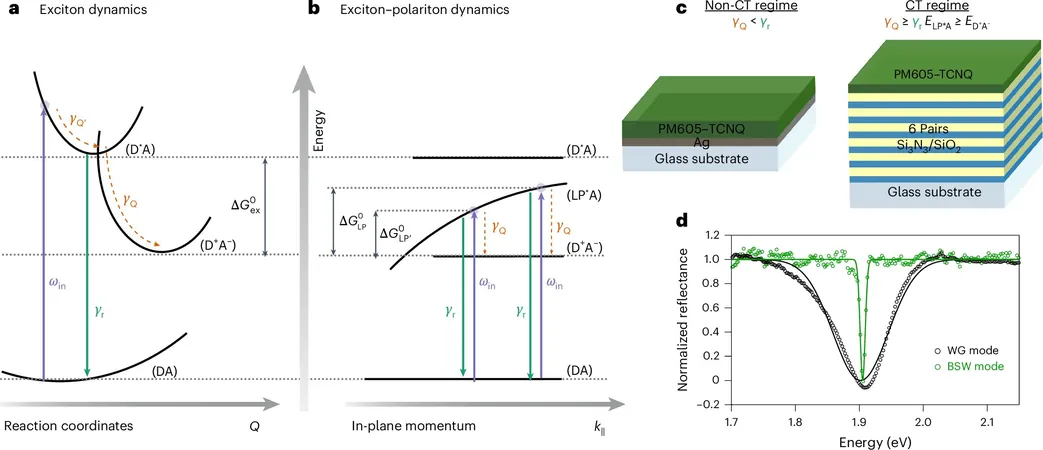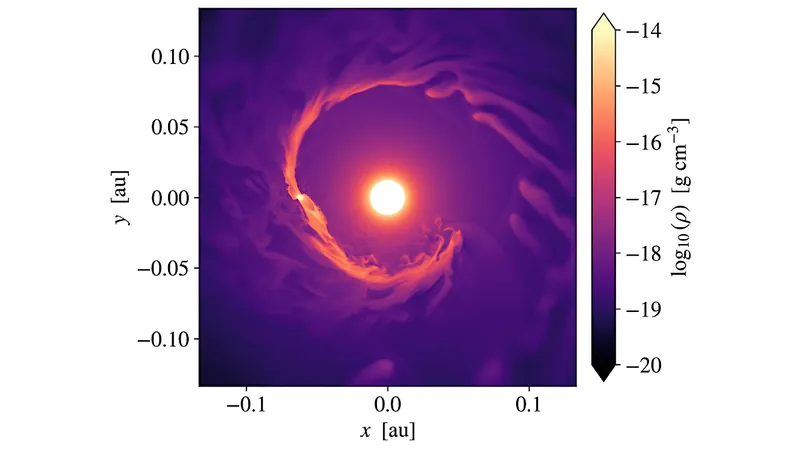
The Shocking Secret Behind the Massive Growth of High-Mass Stars Revealed!
2025-08-24
Author: Jacques
Unpacking the Mystery of High-Mass Stars
High-mass stars have always fascinated astronomers due to their rapid formation and impressive sizes. These celestial giants seem to defy the odds, growing explosively despite powerful radiation and stellar winds that should theoretically strip away their essential fuel.
A Groundbreaking Discovery: Gas Streams Feed the Giants
A pioneering new study led by Fernando A. Olguin from Kyoto University has unveiled a thrilling finding: long, dense streams of gas are channeling material directly to these stars' cores, even in cases where traditional accretion disks are absent or extremely small.
ALMA’s Eye-Opening Observations
Utilizing the cutting-edge Atacama Large Millimeter/submillimeter Array (ALMA) in Chile, the research team focused on a young and massive protostar designated G336.018-00.827 ALMA1. Their investigation revealed two converging gas streams, one of which feeds the star's central region while displaying distinct signs of rotation and infall dynamics.
The Surprising Role of Gas Streamers
Contrary to expectations of finding a large accretion disk spanning hundreds of astronomical units, the researchers discovered spiral arms merging inward, potentially suggesting that these impressive gas streamers act as massive highways funneling matter from vast distances.
Why Size Matters: The Challenges of High-Mass Star Formation
Astronomically, high-mass stars are classified as those that exceed eight times the mass of our Sun. In these cosmic regions, powerful radiation can disrupt the typical spherical collapse. Instead, a unique, non-spherical accretion process allows for the survival of matter influx around polar regions while radiation escapes.
Streamers: The Unsung Heroes of Star Growth
The ALMA1 findings unveiled that the gas streamers are not just passive participants; they actively assist in maintaining a compact inner region where dense material can accumulate, allowing for star growth despite the fierce radiation pressures.
Dynamic Gas Flows Redefine Stellar Formation
ALMA's advanced capabilities provided a vivid picture of these spiraling gas features, clearly tracking movements and temperature variations. Observations indicated a pivotal shift from infall flow to rotational dynamics as material spiraled closer to the protostar.
The Power of Streamers in Stellar Evolution
Through kinematic modeling, researchers demonstrated that these gas streamers can significantly outpace local radiation forces, which is critical for maintaining the substantial mass influx needed for star formation.
Challenging Conventional Wisdom
This groundbreaking discovery puts into question the necessity of large rotating disks for the growth of high-mass stars. Although such disks have been observed in other stellar systems, the findings at ALMA1 highlight that even tiny disks may suffice, thanks to the efficient transport provided by gas streamers.
What Lies Ahead in the Quest for Knowledge
Excited by their results, Olguin and the research team are now eager to explore further regions to see how prevalent these streamers are in star formation. The implications of this study could reshape our understanding of stellar birth and the universe's dynamics.
Join Us on This Journey of Discovery!
Stay tuned as we continue to unravel the mysteries of the cosmos. This illuminating study, which has been published in Science Advances, underscores the complexity and beauty of star formation!









 Brasil (PT)
Brasil (PT)
 Canada (EN)
Canada (EN)
 Chile (ES)
Chile (ES)
 Česko (CS)
Česko (CS)
 대한민국 (KO)
대한민국 (KO)
 España (ES)
España (ES)
 France (FR)
France (FR)
 Hong Kong (EN)
Hong Kong (EN)
 Italia (IT)
Italia (IT)
 日本 (JA)
日本 (JA)
 Magyarország (HU)
Magyarország (HU)
 Norge (NO)
Norge (NO)
 Polska (PL)
Polska (PL)
 Schweiz (DE)
Schweiz (DE)
 Singapore (EN)
Singapore (EN)
 Sverige (SV)
Sverige (SV)
 Suomi (FI)
Suomi (FI)
 Türkiye (TR)
Türkiye (TR)
 الإمارات العربية المتحدة (AR)
الإمارات العربية المتحدة (AR)